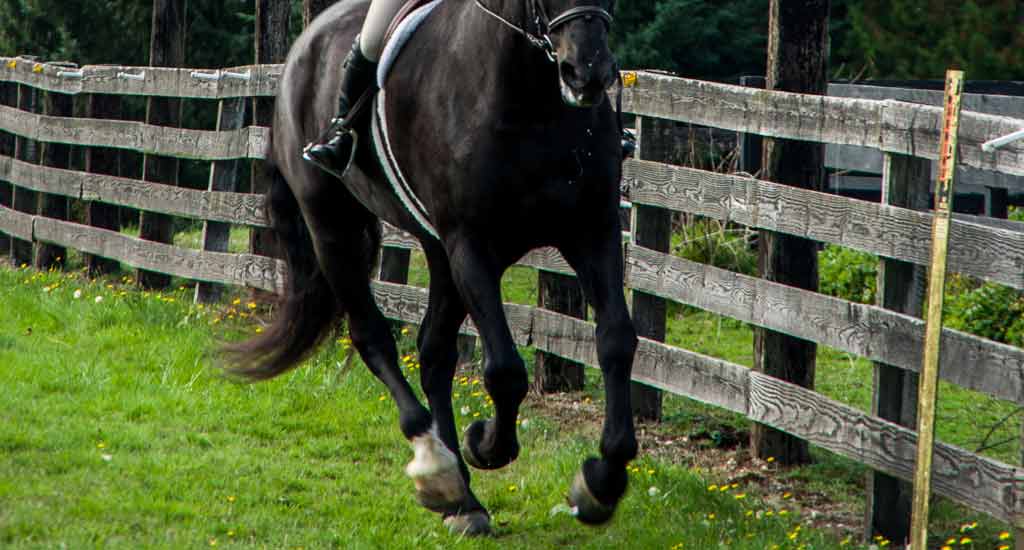Shockwave Alternatives: MicroCurrent and Iontophoresis
Healing Suspensory Ligament Injuries
Using an Alternative Protocol of Microcurrent and Iontophoresis
Many veterinarians suggest Shockwave therapy for treating horses’ suspensory ligament injuries. This is often paired with PRP (Platelet Rich Plasma). However, there are safe and effective alternative therapies available.
Shockwave, originally called ESWL (Extracorporeal Shock Wave Lithotripsy), was developed to break up kidney stones in people. For large kidney stones, high-pressure waves (ESWL) break down the rocks into smaller pieces that can be passed through the urine. According to the Mayo Clinic’s website (03/3016), side effects after treatment can be blood in the urine, bruising on the back or abdomen, bleeding around the kidney and other adjacent organs, and discomfort.
The veterinarian application is supposed to be a less aggressive setting than for kidney stones, with the purpose being hyperstimulation of the injured area. Not all vets believe that shock wave makes sense, and I’m in that camp. Having experienced it myself, I find that it feels like a jackhammer on your body, which explains why horses need localized sedation to comply with the treatment. It also explains why, at race tracks, some people will secretly use shockwaves to numb a horse’s legs. This can last a few days, enabling a horse to run while masking possible injuries.
An Alternative Protocol for Healing
There are many ways to get excellent circulation to an injury without hitting it with high-pressure waves. In my field, we use a protocol of microcurrent, iontophoresis, and non-neoprene compression support wraps so that the horse can move in managed turnout and hand walking. Microcurrent can even be used simultaneously with a cold wrap if there is heat in the leg during the acute stage of an injury. The flexibility of methods allows the user to tailor a program to fit the owner’s schedule and the horse’s temperament.
Hind Leg Unattended Treatment: Iontophoresis pads under casted legs provide therapy and support.
MicroCurrent & Iontophoresis Treatments
Microcurrent can be used with ice wraps, as well as compression wraps.
Even the PRP, IRAP, and Stem Cell steps are not used. We use microcurrent to promote self-healing and ligament integrity. Since microcurrent helps ligaments heal without the weaker scar tissue, we feel no need to blast them with Shockwaves first. Also, the microcurrent setups help guide the tissues to align correctly.
While the research in this field is mainly testimonial-based on user reports, there are no known adverse side effects of using this treatment protocol. This is important to note because shockwave treatments do have the potential for adverse side effects. A percentage of horses do not recover from shockwave treatments, which correlates to testing on people.
Over the last few years, shockwaves have been tested microscopically in musculoskeletal (lithotripsy) applications to cause inertial and extracellular biological responses and tissue regeneration. According to a paper published by Angela Notamicola and Biagi Moratti in Muscle, Ligament and Tendons Journal (2012-Jan-Mar), success rates range from 60-80% in various tendonitis syndromes.
Maintain, Heal, Protect with Microcurrent
Microcurrent is a versatile therapy modality beneficial for physical maintenance, injury prevention, and healing. It should be used regularly as a maintenance tool to help prevent injury, especially with performance horses. To take it further, use a microcurrent device with biofeedback like the Matrix Best-Vet III to help locate soreness early on.

